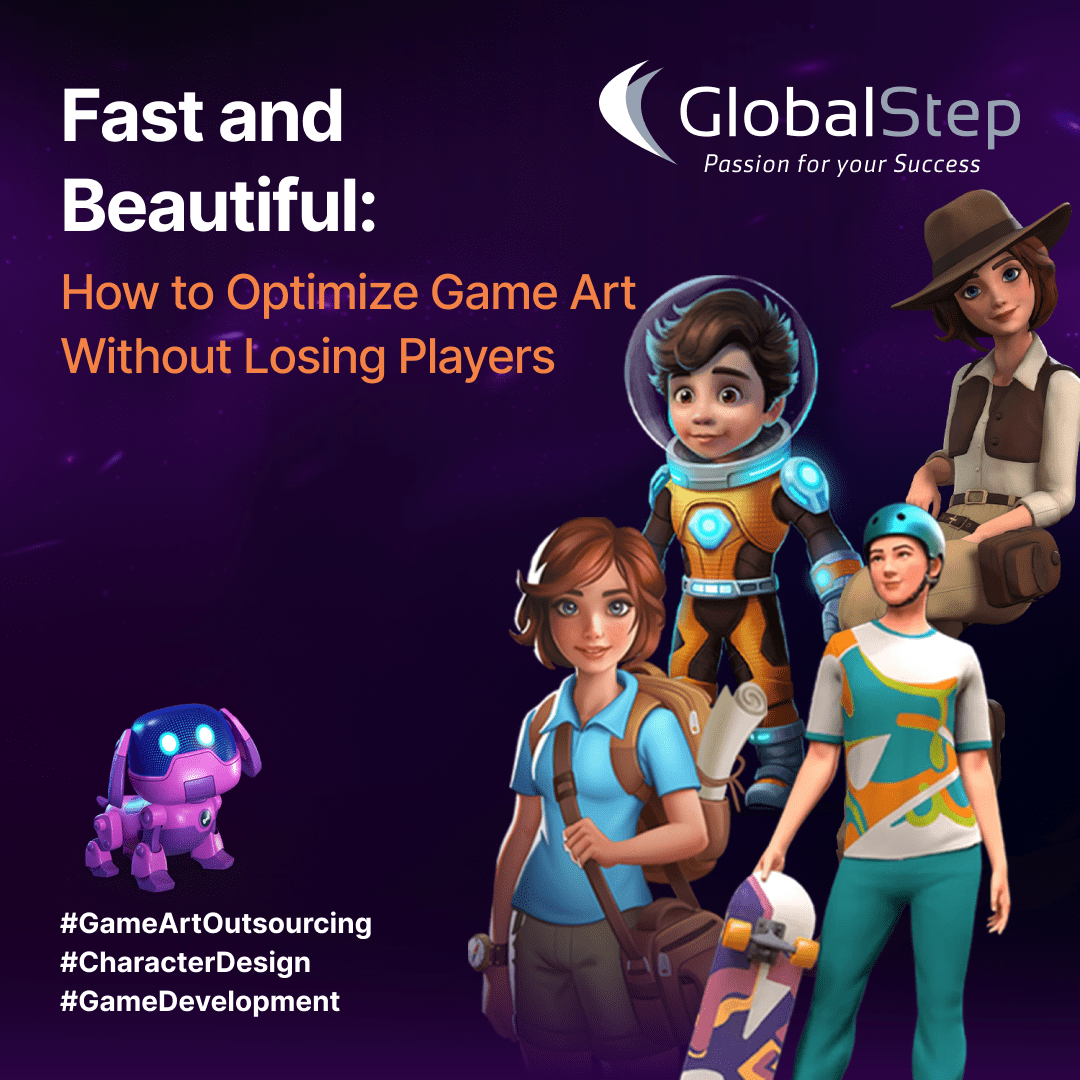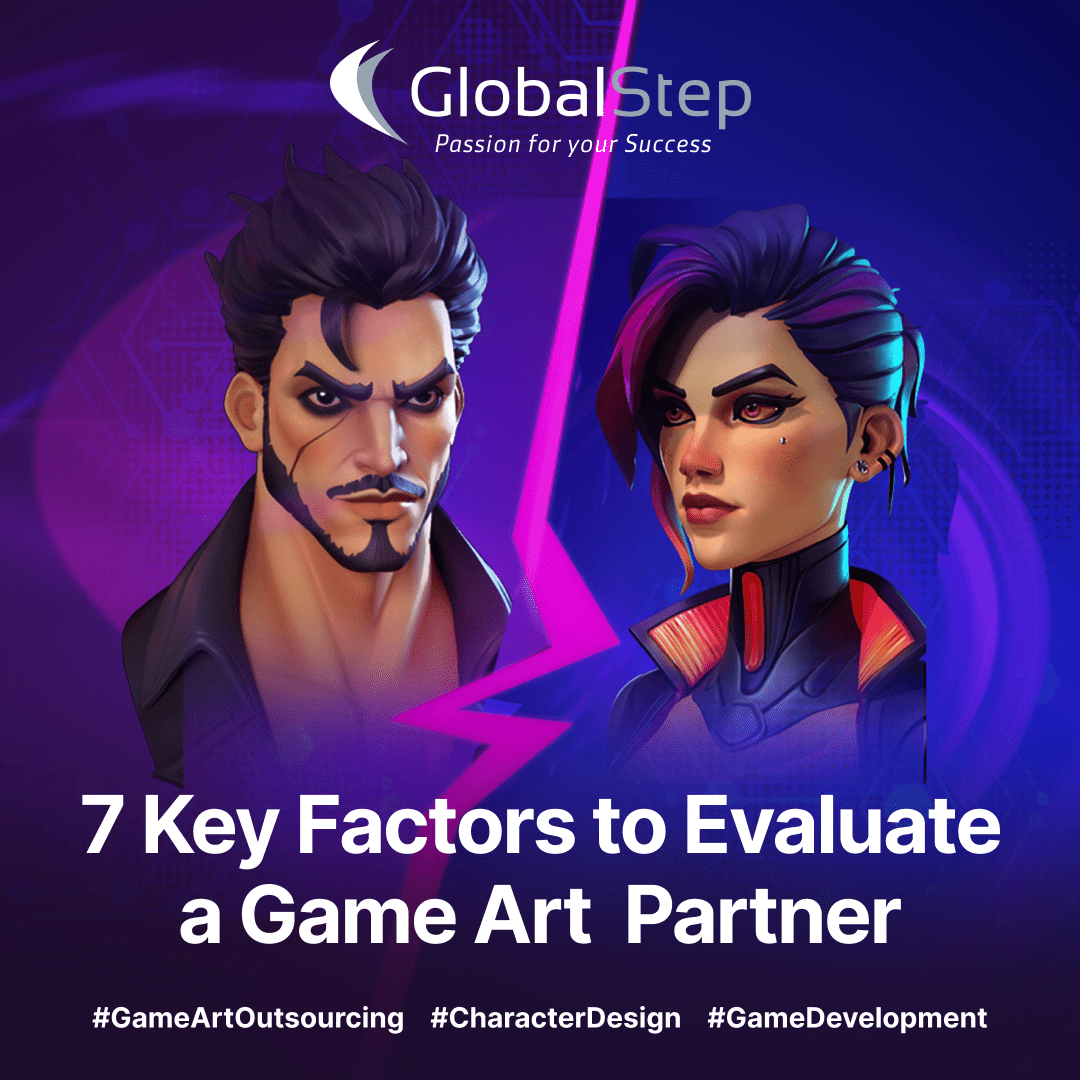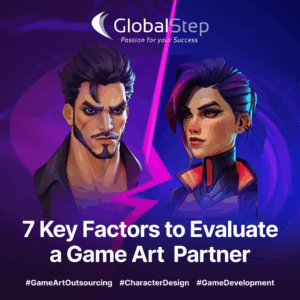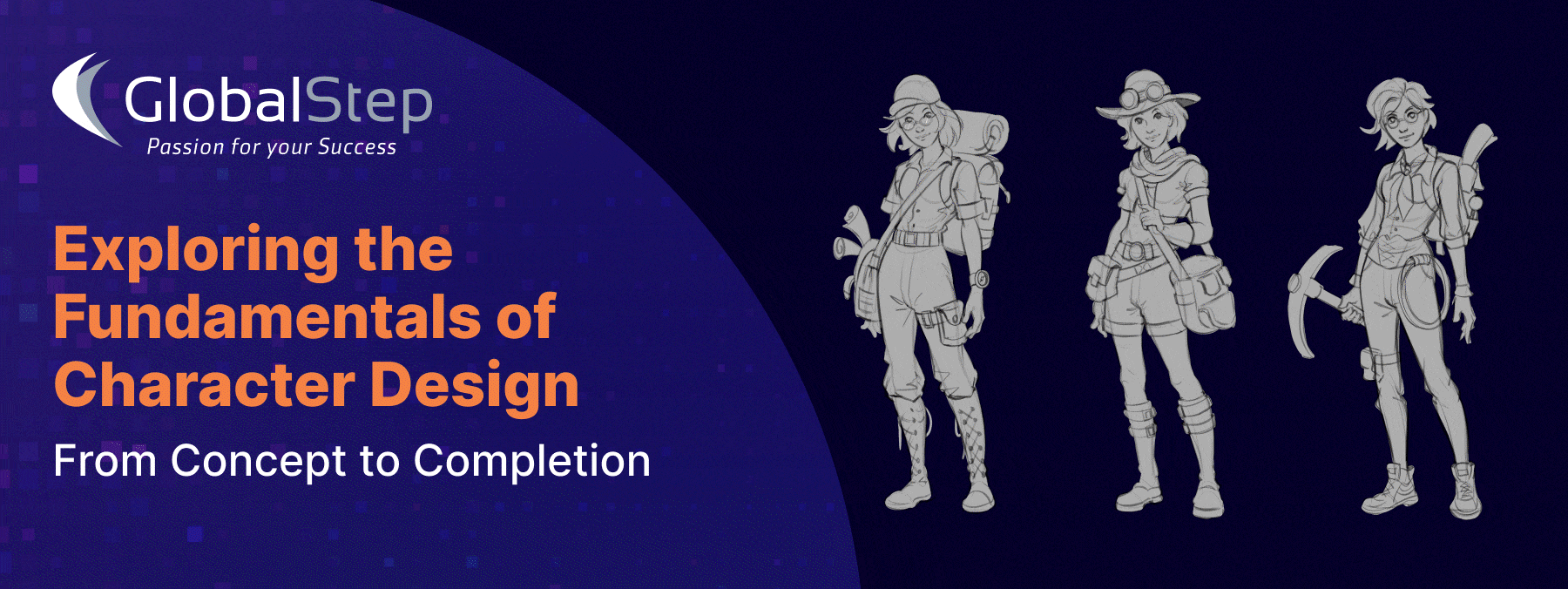
Creating engaging game characters, from the first concept to the final game integration.
Introduction
Character design is the key to a player’s sense of joy. In video game development, it can provide a narrative perspective or serve as a vessel for self-expression. It’s a crucial factor in how players perceive and relate to the video game world, shaping their overall experience. Every step in the character design process is vital, from the first idea to the final animated model. This blog delves into the character design journey, exploring how game style, story, setting, and gameplay features influence the outcome.
Concept Phase
Depending on the type of game and the intended audience, designers explore various looks and feels for the IP. Factors like realism, stylization, humor, and brutality influence the choices made. Artists draw inspiration from culture, history, and different art styles that support the narrative and gameplay vision. Intentionality is crucial to ensure that characters fit seamlessly into the game’s story and world. This phase involves quick thumbnail sketches to define proportions, shapes, intricacy, body language, and personality. Through this concept phase, designers experiment with ways to differentiate from comparable titles and convey gameplay information effectively.
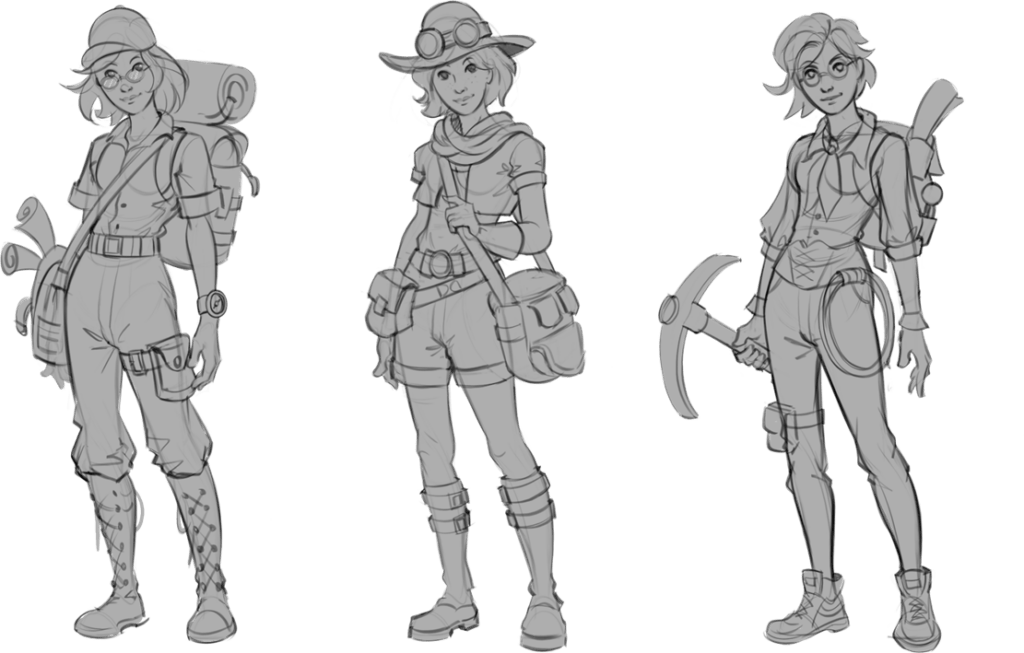
Initial Sketch Concept
Styling and Aesthetics
Defining a character’s canonical look is a critical aspect of IP design. The style—whether realistic, cartoonish, medieval, or futuristic—must align with the game’s overall visual approach. Designers play with thematic tones, colors, shapes, and outlines to evoke specific emotional responses. Adjectives like sneaky, lithe, leonine, sinewy, and opportunistic help guide the exploration of anatomy, color, fashion, weapon choice, and magical themes. After iterating with art leads and other key stakeholders, the design is fine-tuned to ensure it aligns with the character’s role in gameplay and narrative, fits cohesively with the rest of the game, and suits their importance within the story.

Enhanced Sketch
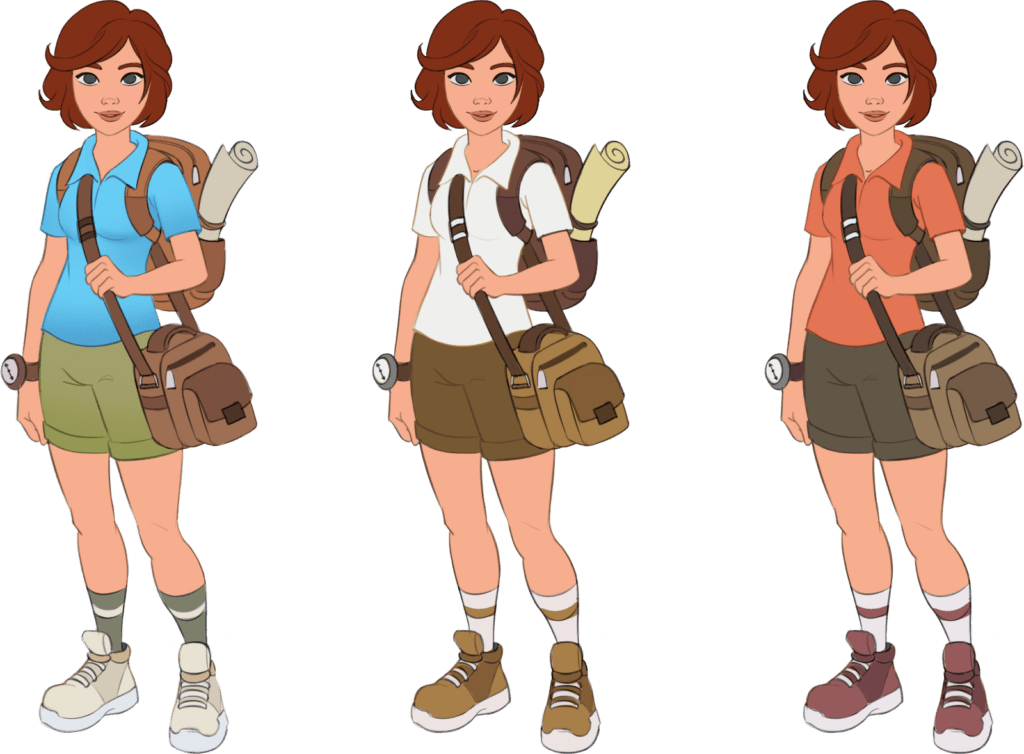
1st Color Draft
Narrative and Character Backstory
A well-designed character goes beyond appearance; they possess depth and motivation. Developing a rich backstory—even if it’s not fully revealed—adds layers of authenticity and quality. Giving characters strengths, flaws, and motives fosters emotional connections with players, enhancing their long-term engagement and interest in the game.
Setting and Environment
Characters must seamlessly integrate into the game’s world, creating a sense of immersion where the world reacts to their presence. In games where the environment affects characters and vice versa, this interaction enhances the player’s experience. Artists and designers carefully choose clothing and gear that fit the world’s ecosystems and movement style. If gameplay cues are communicated through the character’s appearance (e.g., damage, wetness), players will feel the dynamic interaction between the character and the world.

Final 2D Art Character Concept
Gameplay Mechanics
Integrating character design with gameplay elements is vital for creating a seamless gaming experience that doesn’t need a lot of UI to communicate with you. Game creators focus on crafting engaging characters that look striking and serve a purposeful role. They strike a balance between clear visuals, collision detection, smooth animations, and responsive controls to ensure characters feel intuitive across many scenarios of combat exploration and stealth.
Modeling and Texturing
Transforming 2D concepts into 3D models varies based on the art style, platform, engine, and custom technology. Most modern games involve creating a high-resolution digital sculpture with intricate details and surfacing, then simplifying it into a lower-resolution mesh optimized for real-time rendering. This mesh is textured to replicate the detail of the high-res model and is animated using a virtual skeleton. The quality of textures and materials can make the character look more realistic or stylized, depending on the game’s visual direction. Fine-tuning for performance is crucial to ensure multiple characters can appear on screen simultaneously without causing low framerate.

Hi-Res Model

LOD 0 Model

Facial Expression Animation
Animation and Movement
Creating animations that reflect a character’s personality and gameplay role is essential to bringing them to life. Whether standing idle, walking, or fighting, animations must be smooth, responsive, and seamlessly transition between states, allowing players to feel empowered and skillful. Testing and refining animations based on player feedback ensures a high-quality feel that enhances the game’s overall vibe

Final Integration and Testing
The final step involves integrating characters into the game engine, considering all other visual priorities and technical constraints. Environment art, materials, AI, collision, VFX, shaders, post-processing, and rendering features all impact performance. If the character looks great but doesn’t perform well, further iterations may be needed. Visual consistency across the entire character collection is also checked, especially for modular designs. Players often do things the developers didn’t anticipate, which can lead to new opportunities for improvement. Incorporating player feedback helps refine character appearance and behavior, ensuring an engaging game experience at launch.
Narrative, expression and technical solutions.
Often, a game requires multiple versions of the same character, known as Levels of Detail (LODs), tailored for different uses:
- LOD0: A detailed version with intricate facial expression controls and physics-driven clothing and hair for close-up cinematic moments. However, it’s too resource-intensive for combat, creating the need for LOD1.
- LOD1: Optimized for combat and general gameplay but too coarse for acting. It works well for action scenes but is still too detailed for distant views, leading to the need for LOD2.
- LOD2: Simplified for distant views, it retains only essential details for recognition from afar.
Conclusion
Character design impacts every aspect of video game development, from start to finish. Memorable characters leave a lasting impression on players and elevate the entire video game experience. At GlobalStep, our team of skilled artists and experts can help bring your characters to life with meticulous attention to aesthetic, emotional, and technical details using the latest tools. Whether you’re starting a new project or enhancing an existing one, GlobalStep is the ideal partner for creating exceptional game art.
Ready to make your game characters stand out? Schedule a meeting with GlobalStep today to discover how our character design expertise can elevate your game to the next level.
